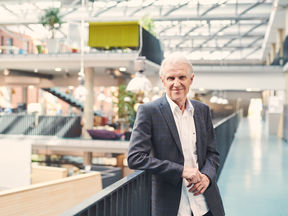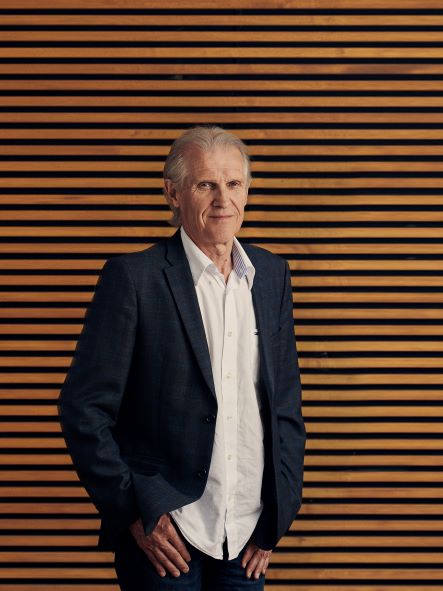Five things to know about hybrid work

-
In international comparison, Finns do a lot of remote work
Even before the pandemic-induced change in work culture, Finns have done a lot of remote and telework compared to other countries. The latest statistics from before the pandemic are from 2018, when 28 percent of Finnish workers worked remotely at least part of the time. In 2022, the number of people doing hybrid work had risen to 45 percent. In the United States, around 28 percent currently work hybrid jobs. Europe shows large differences between countries. Before the pandemic, on average, around 12 percent of workers in Europe worked at least partly remotely, rising to 22 percent in 2021.
According to Vartiainen, around half of all jobs could be hybridised today. This is the case particularly for senior management and specialists. At least in Europe, there is a lot of interest in that, too; Vartiainen says that, according to a Eurofound 2022 survey, 68 percent of Europeans would like to work remotely more often.
-
Hybrid work can cause the ‘autonomy paradox’ - workers now have a lot of influence over their work, but work spills over into free time
According to Vartiainen, one of hybrid work’s major advantages is that it gives individuals an increased sense of autonomy and genuine influence over their work, especially where to work and when. However, this autonomy can lead to work spilling over into spare time. Researchers call this the ‘autonomy paradox’. Full-time availability is a downside of hybrid work and can lead to burnout. Especially, workers in expert-level jobs tend to be available at all hours.
Vartiainen emphasizes the importance of taking breaks from work and making the most of the flexibility that comes with hybrid work. This can, for example, mean doing some sports or having a walk between work activities. Despite the autonomy, maintaining an active dialogue with the employer is important to keep the work meaningful.
-
There are few regulations on hybrid work
Neither a shared culture nor a uniform contractual framework for hybrid work exist in Europe. According to Vartiainen, despite the lack of laws and regulations on hybrid work, in many European countries, including Finland, Italy, France, and Sweden, workers' and employers' unions have agreed on some frameworks for hybrid work.
There has been a lot of discussion in Europe about the "right to disconnect". This demand has even given rise to a movement seeking legislative measures or a collective agreement to guarantee workers a genuine opportunity to end their working day and refuse to be available after working hours.
-
Hybrid work requires new skills from the manager
Managers have a demanding dual role when they both lead the hybrid work of their teammates and do hybrid work themselves. This requires a new set of skills that should also be considered when training supervisors. As hybrid work can reduce and challenge the social aspect of the job, a manager should pay particular attention to maintaining a sense of community and promoting relationships between teammates. Similarly, ensuring that necessary technology functions well is essential to smooth hybrid work.
Employees should be guaranteed adequate internet access, tools for collaboration and work ergonomics and proper working conditions wherever work occurs. It is important for the manager to design hybrid working practices together with the employee rather than dictating off-the-shelf solutions. The supervisor's support, advice, and availability are also crucial at a remote location. Help and answers to questions should be provided quickly when working remotely.
-
Hybrid work can increase part-time and freelance work
According to Vartiainen, hybrid work is part of an ongoing trend where employers seek to increase flexibility in labor relations. Part-time, fixed term and freelance work are other forms of work that are becoming more common. Vartiainen sees these different dimensions of flexibility as reinforcing each other.
Increasing flexibility in work, which, on the one hand, offers workers new freedoms in terms of physical location, scheduling and working methods, can therefore on the other hand serve as a tool for organizations to increase their economic efficiency. This can lead more workers into atypical and less regulated contracts. This will also make employment relationships less secure and hybrid work compulsory, rather than optional. In the long run, this can lead to a divide concerning voluntary hybrid work versus ‘obligatory’ hybrid work.
Matti Vartiainen and Outi Vanharanta's study Industrial relations and social dialogue – Hybrid work: definition, origins, debates and outlook was published in June. Based on a survey conducted in 27 European countries, the study explores the nature and definition of hybrid work. It finds that hybrid work is changing the nature of work on multiple levels, extending work beyond the home to places such as libraries and cafés, and over time across the day. It also shifts social relationships to computer-mediated ones, often to the detriment of creativity and a sense of community.

- Published:
- Updated:
Read more news

Pengxin Wang: The internship was an adventure filled with incredible research, unforgettable experiences, and lifelong friendships.
Pengxin Wang’s AScI internship advanced AI research, fostered global friendships, and inspired his journey toward trustworthy AI solutions.
Major grant from the Kone Foundation for modern architecture research - Laura Berger's project equates building loss with biodiversity loss
Aalto University postdoctoral researcher Laura Berger and her team have been awarded a 541 400 euro grant from the Kone Foundation to study the effects of building loss on society and the environment.
14 projects selected for seed funding to boost collaboration between Aalto, KU Leuven, and University of Helsinki
The funded projects lay the groundwork for future joint research endeavors, reinforcing the strategic partnership’s goal to fostering impactful and interdisciplinary collaboration.